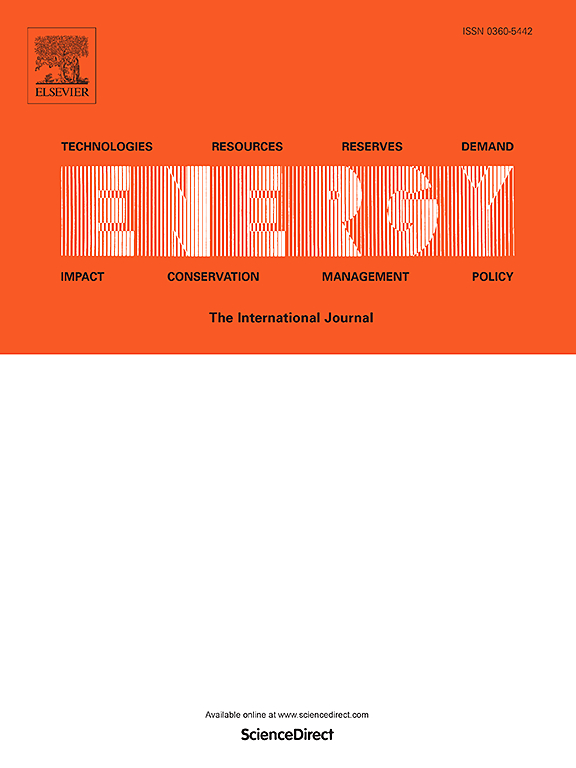Numerical study on transient critical heat flux prediction with dynamic bubble simulation under exponentially escalating heat input
IF 9
1区 工程技术
Q1 ENERGY & FUELS
引用次数: 0
Abstract
This paper presents the development and validation of numerical transient critical heat flux (CHF) prediction model based on the coupling of dynamic bubble simulation by Monte Carlo (MC) method and two-dimensional heat conduction model of the substrate by finite volume method. The model aims to predict the transient CHF value, estimate the dynamic heat flux and temperature distribution and evaluate various phenomena of bubble behaviors during transient boiling heat transfer process under exponentially escalating heat power input. The dynamic bubble simulation is performed by modeling and tracking bubble nucleation, bubble growth, bubble departure and bubble coalescence procedures of individual bubbles in real time based on simplified fundamental bubble parameters including nucleation site density (NSD), bubble departure diameter, bubble growth and waiting time. The heat flux partitioning model was used to evaluate different heat fluxes based on the classification of microlayer and dry spot regions. According to the dynamic heat flux boundary due to dynamic bubble behavior and exponentially escalating heat input, the thermal conductivity model was coupled to feed back the wall temperature distribution for further updates and simulation of dynamic bubble behavior. Numerical simulation results showed good agreement with transient flow boiling experimental results with escalating periods ranging from 500 ms to 5 ms, and the results showed the trend that the transient CHF value increases with decreasing escalating period as observed in experiments. Sensitivity analysis of input bubble parameters was performed and showed that the model is more sensitive to bubble departure diameter and bubble waiting time.
求助全文
约1分钟内获得全文
求助全文
来源期刊

Energy
工程技术-能源与燃料
CiteScore
15.30
自引率
14.40%
发文量
0
审稿时长
14.2 weeks
期刊介绍:
Energy is a multidisciplinary, international journal that publishes research and analysis in the field of energy engineering. Our aim is to become a leading peer-reviewed platform and a trusted source of information for energy-related topics.
The journal covers a range of areas including mechanical engineering, thermal sciences, and energy analysis. We are particularly interested in research on energy modelling, prediction, integrated energy systems, planning, and management.
Additionally, we welcome papers on energy conservation, efficiency, biomass and bioenergy, renewable energy, electricity supply and demand, energy storage, buildings, and economic and policy issues. These topics should align with our broader multidisciplinary focus.
 求助内容:
求助内容: 应助结果提醒方式:
应助结果提醒方式:


